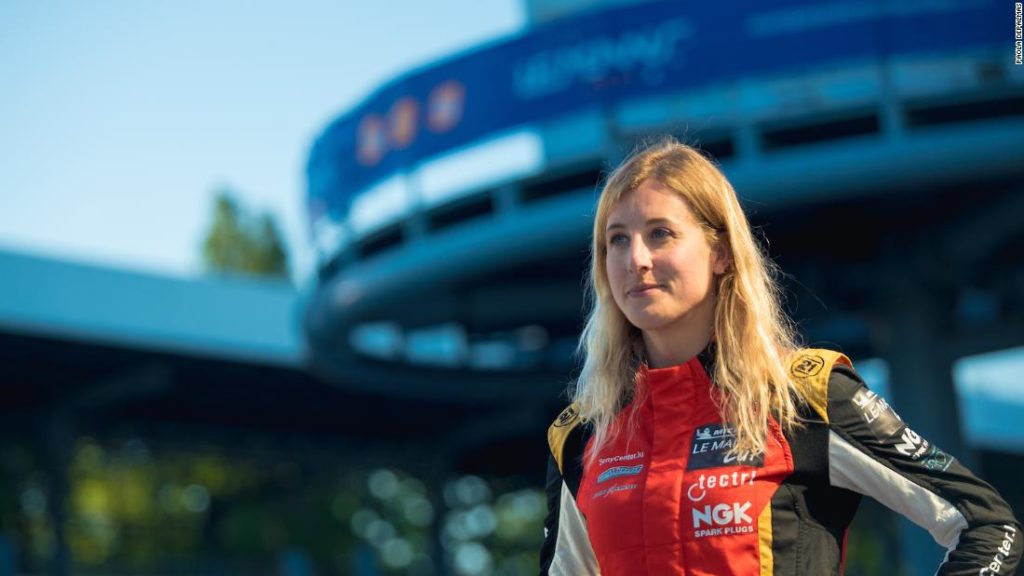Alongside her commitment to supporting LGBT communities — which she signifies with a distinctive blue butterfly logo — Martin is the only elite transgender driver in motorsport and one of the few athletes defending the right for trans girls to take part in women’s sports.
“When you have an opportunity like this, it feels too important, especially at a time like now where there is so much discrimination happening against the trans community,” she says. “It’s really alarming to see.”
She’s not wrong. Activists have already called 2021 a record-breaking year for anti-transgender legislation in the US, with 31 states introducing bills that ban transgender girls from participating in school sports consistent with their gender identities. The bills are also seeking to limit access to gender affirming health care.
“This is about kids striving to better themselves, their self-esteem, their vision of what they can achieve … sport is a big part of that,” Martin adds. “Denying that … it blows my mind.”
‘I felt very alone’
“I felt very alone,” Martin tells CNN Sport’s Christina Macfarlane. “When I saw Caroline Cossey, I was like, at least I’m not the only person in the world that feels this way.”
She says that, as a child, she was grappling with feelings of loneliness and anxiety, while she also suffered anorexia and depression.
“I was always struggling with the way I felt because when you’re not living authentically as your true self … you’re effectively using physical energy to suppress who you are.”
“Having things that you’re passionate about … is hugely important for anyone,” she says. “To have things that you identify with as an individual that inspire you and give you a lot of your drive in life.”
A leap of faith
By the age of 30, Martin was an established endurance racing driver, and that was the year she transitioned.
It wasn’t an easy decision and she temporarily stepped away from the track.
“I just thought I would be facing massive rejection, which is a horrible thing for anybody to contemplate,” she says. “I had to choose transition over everything else, just to carry on living.”
She has amassed over 50,000 followers across social media and garnered messages of support from people who she says subsequently found the courage to transition themselves.
Martin has since been praised for her unwavering honesty and sincerity.
“Keep pushing to be the person that you want to be because there’s no better thing in life than to live as your true, authentic self,” she says.
Returning to the race track
In 2013, Martin decided she wanted to race again.
“It was, to this day, probably one of the scariest things I’ve ever had to do,” she says. “I remember sitting in my car, shaking, thinking I don’t want to do this, but I have to because it’s the only way forward.”
Her father died from cancer when she was a child and her mother passed away when she was 23. Without parental support, she says the support of friends was key to helping her resume racing.
“I wouldn’t have gone back to racing if they hadn’t been there that day,” she says. “They came over all smiles, gave me a big hug and just engaged with me.”
But Martin took her time in making her return.
From a caterpillar to a butterfly
“You start believing in yourself,” she says. “On top of that, you’re able to focus and concentrate because you’re not living in denial.”
It seems that her boundless sense of optimism has led her to where she is today, a motif encompassed by her blue butterfly logo.
“If a caterpillar can turn into a butterfly, then to me, it symbolizes possibility … incredible things can happen in life if you believe in them.”
You may also like
-
Super League: UEFA forced to drop disciplinary proceedings against remaining clubs
-
Simone Biles says she ‘should have quit way before Tokyo’
-
Kyrie Irving: NBA star the latest to withhold vaccination status
-
Roger Hunt: English football mourns death of Liverpool striker and World Cup winner
-
‘Every single time I lift the bar, I’m just lifting my country up’: Shiva Karout’s quest for powerlifting glory

